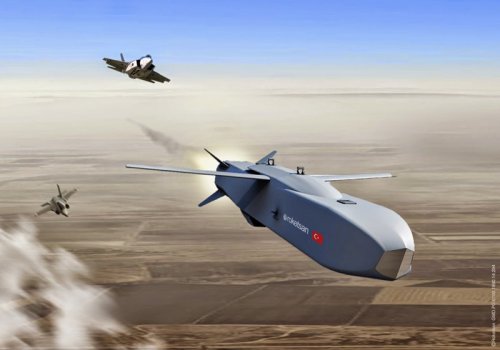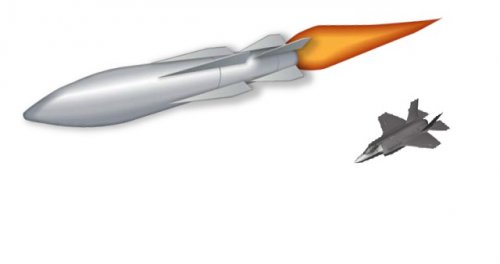Even as the last F-22 fighter jet rolls out of flag-draped doors at a Lockheed Martin Corp (LMT.N) assembly plant on Tuesday, the Air Force has taken steps that leave open an option to restart the premier plane's production relatively cheaply.
The Air Force is preserving the hardware used to build the jet, not scrapping it, although it insists this is solely to sustain the fleet over its projected 30-plus years' "lifecycle."
The F-22 is "easily the most capable fighter aircraft ever built, period," said Richard Aboulafia, a combat plane expert at the Teal Group aerospace consultancy.
"You don't know what the economy and the strategic picture will look like in a decade," he said. "And if one gets better and the other gets worse, you could see a restart."
A lunchtime ceremony feting F-22 program employees will mark the emergence of the 187th and final production model from the Marietta, Georgia, plant, 14 years after the most advanced and most costly per-plane U.S. fighter began flight tests.
F-22 supporters maintain it was terminated prematurely.
The fleet, as conceived during the Cold War, was to have been 750. That dropped to 381, then 243, before former Defense Secretary Robert Gates capped it at 187 in a belt-tightening move over program backers' strong objections.
A total of more than 30,000 jigs, fixtures and other "tooling" used to build the plane are being logged into a database and tucked into containers, some custom built, for long-term storage at Sierra Army Depot, Herlong, California.
The hardware is valued at $2 billion to $3 billion, according to Lockheed, the Pentagon's No. 1 supplier by sales.
The Sierra depot's high desert climate, low humidity and mild temperatures, are optimal for systems that might be needed to build components to support the fleet, or perhaps one day resume production.
Arms production lines have shut in the past only to be brought back, including aircraft such as the submarine-hunting P-3, U-2 spy plane and B-1A bomber resurrected as the B-1B.
Lockheed is under Air Force contract also to preserve the shop-floor know-how used to manufacture the fighter. It is accomplishing this through a video library of "smart books," DVDs designed to capture such things as how to hold a tool for best results.
The two-pronged preservation effort puts Lockheed in a "great position" to resume production if asked to do so, said Jeff Babione, the company's F-22 program general manager.
But Lockheed, the Pentagon's No. 1 supplier, has not been given any reason to think that such a request will come, he added in a telephone interview on Friday.
Bringing back the F-22 line would take less than $200 million, "a fraction of the costs seen in previous line restarts of other weapons systems," Alison Orne, a Lockheed spokeswoman, said by email, citing preliminary analysis.
The Air Force said government-owned F-22 production is being stored "for the sole purpose of sustaining the F-22 fleet" over its lifetime.
"No F-22 parts, tooling or related items are being stored for the purpose of preserving the option of restarting F-22 production," Jennifer Cassidy, an Air Force spokeswoman, said in an email.
She said the Air Force had commissioned a RAND analysis to assess tooling preservation options at congressional direction. The study concluded that saving the hardware "may significantly ease the execution of future F-22 sustainment needs, and the storage of that tooling can be provided at relatively low cost."
CUTTING EDGE
The radar-evading F-22 "Raptor" entered service in 2005, designed to own the skies on the first day of a conflict because of its low observability, high maneuverability plus sensor advances that make it the top gun for air-to-air combat.
Its cutting-edge capabilities, including agility, engine thrust and flight controls, "cannot be matched by any known or projected fighter aircraft," according to a U.S. Air Force fact sheet on the plane, which has not yet been used in combat.
The F-22 represents the high end of a tactical fighter mix that advocates say is critical to defend worldwide U.S. interests over coming decades alongside the F-35, a less capable, less costly, Lockheed stealth fighter now in early production.
The Pentagon currently plans to buy more than 2,440 F-35s for the Air Force, Navy and Marine Corps at $382.5 billion through 2035, its costliest purchase ever.
The current "program acquisition unit" cost of the F-35A model for the Air Force is $111 million, including "mission systems" and sustainment.
By contrast, the last production lot of four F-22s cost $153 million each, according to Lockheed, not including amortized research, development and maintenance that experts say would add more than $200 million apiece.
RESTART BUTTON?
Advocates of a larger F-22 fleet have cited emerging Russian and Chinese stealth fighters as well as the spread of sophisticated surface-to-air missiles that can home in all but the hardest-to-detect fighters.
The F-22 was barred from export sales to protect its high-tech secrets.
Michael Wynne, who was forced out as Air Force secretary in 2008 after disagreeing with Gates over the production cap, said by email that Japan and Australia would "immediately partner" to restart the line if Congress lifted the F-22 export ban.



